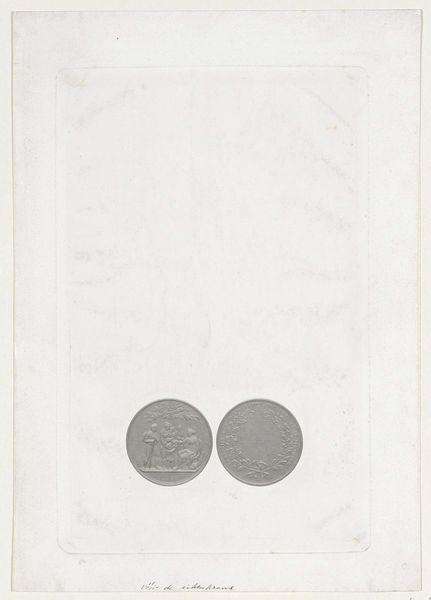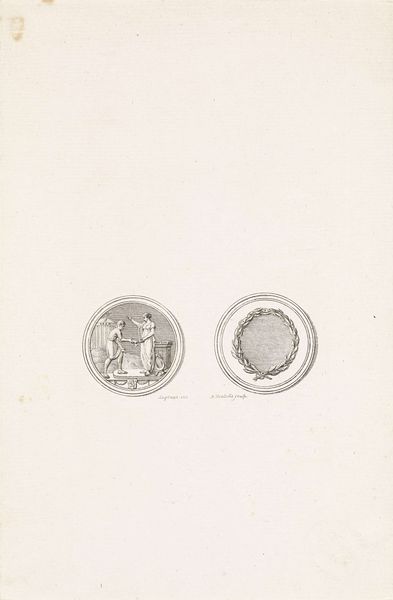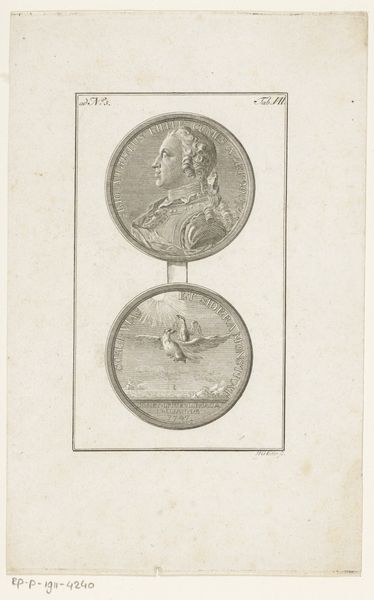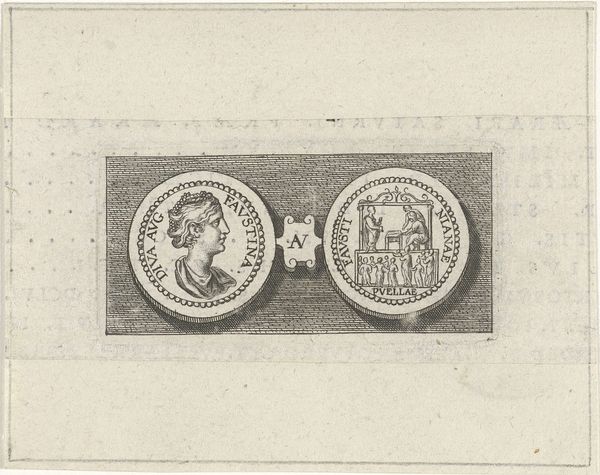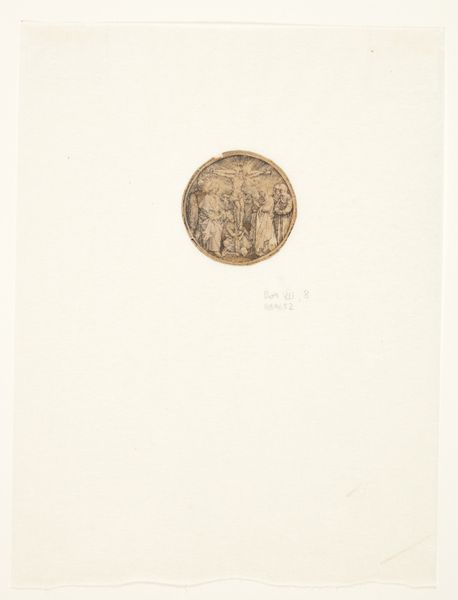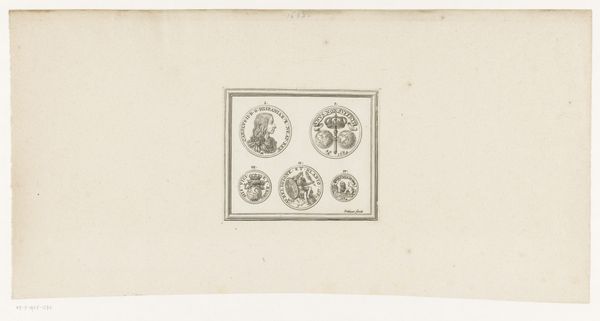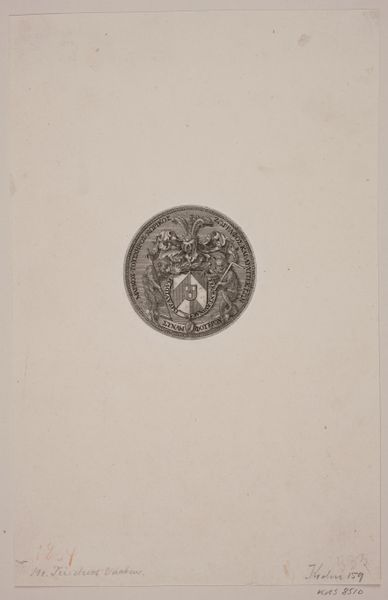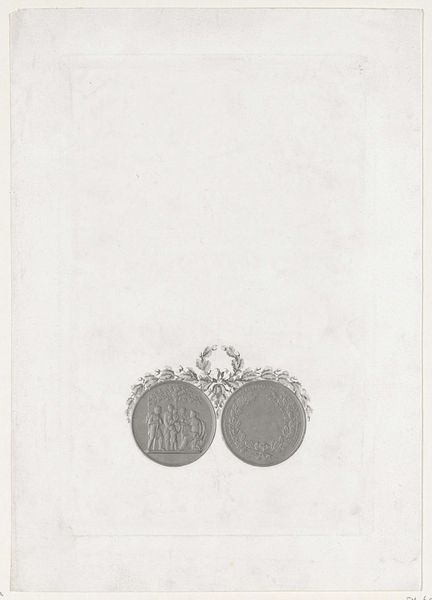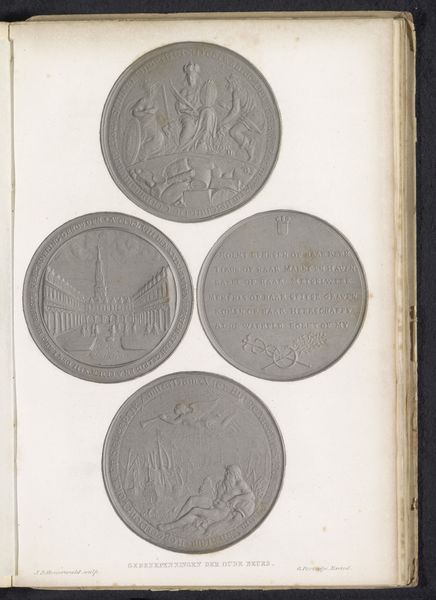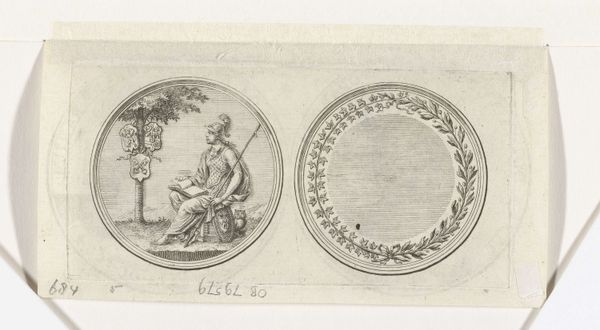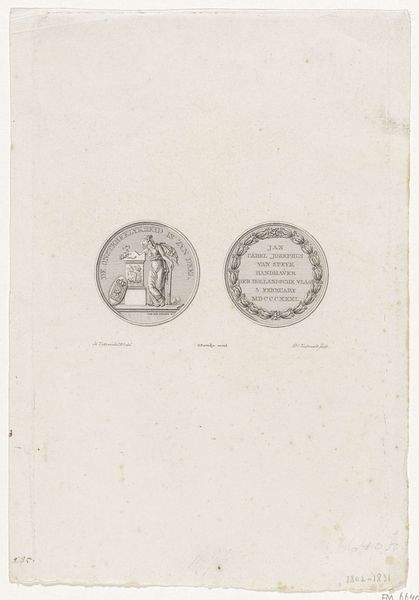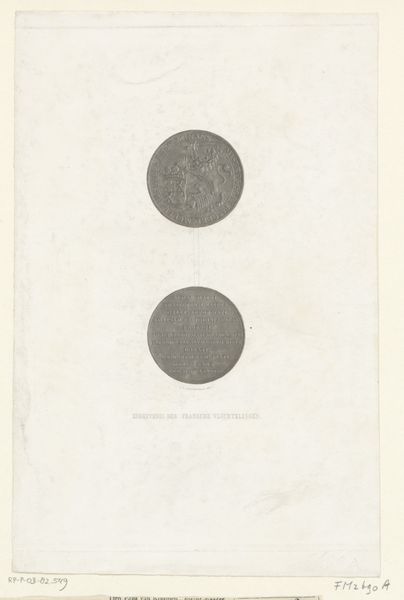
print, metal, relief, engraving
#
portrait
#
neoclacissism
#
aged paper
# print
#
metal
#
light coloured
#
relief
#
old engraving style
#
history-painting
#
engraving
Dimensions: height 277 mm, width 173 mm
Copyright: Rijks Museum: Open Domain
Editor: This is "Penning van de Maatschappij tot nut van 't algemeen," a print from 1835 by Jan Dam Steuerwald, currently housed in the Rijksmuseum. It looks like an image of a coin or medallion, rendered in an old engraving style. What do you see in this piece? Curator: Well, this print showcases the neoclassical style popular at the time. Considering it represents a medal from the Society for Public Welfare, it speaks volumes about the values the institution wanted to project. Editor: Values, like what exactly? Curator: Observe the imagery: a group of figures, possibly representing an ideal community, beneath a tree, almost classical in their arrangement. This idealized depiction suggests the society's aspirations for social harmony and progress through collective effort. Consider that the placement in the Rijksmuseum now gives this item an elevated cultural significance, a function the organization sought from the beginning, I presume. Editor: So it’s a political object presented as an artwork? How subversive. Does the wreath have something to say, too? Curator: The wreath certainly adds to the visual language. It is symbolic of victory and honor, suggesting the society saw its own work as contributing to the betterment and glory of the nation. Given its purpose, it would likely be reproduced for widespread distribution to promote these values among the public. Editor: That makes me see this less as an artifact and more as an advertisement, promoting a particular vision of society. Curator: Precisely! The print and its underlying symbolism are designed to reinforce specific cultural and societal norms, thus playing a powerful role in shaping public perception. Understanding its historical context allows us to better interpret the values of the organization and the society it aimed to influence. Editor: This really gives me a new understanding of how art reflects and shapes social and political landscapes. Thank you!
Comments
No comments
Be the first to comment and join the conversation on the ultimate creative platform.
